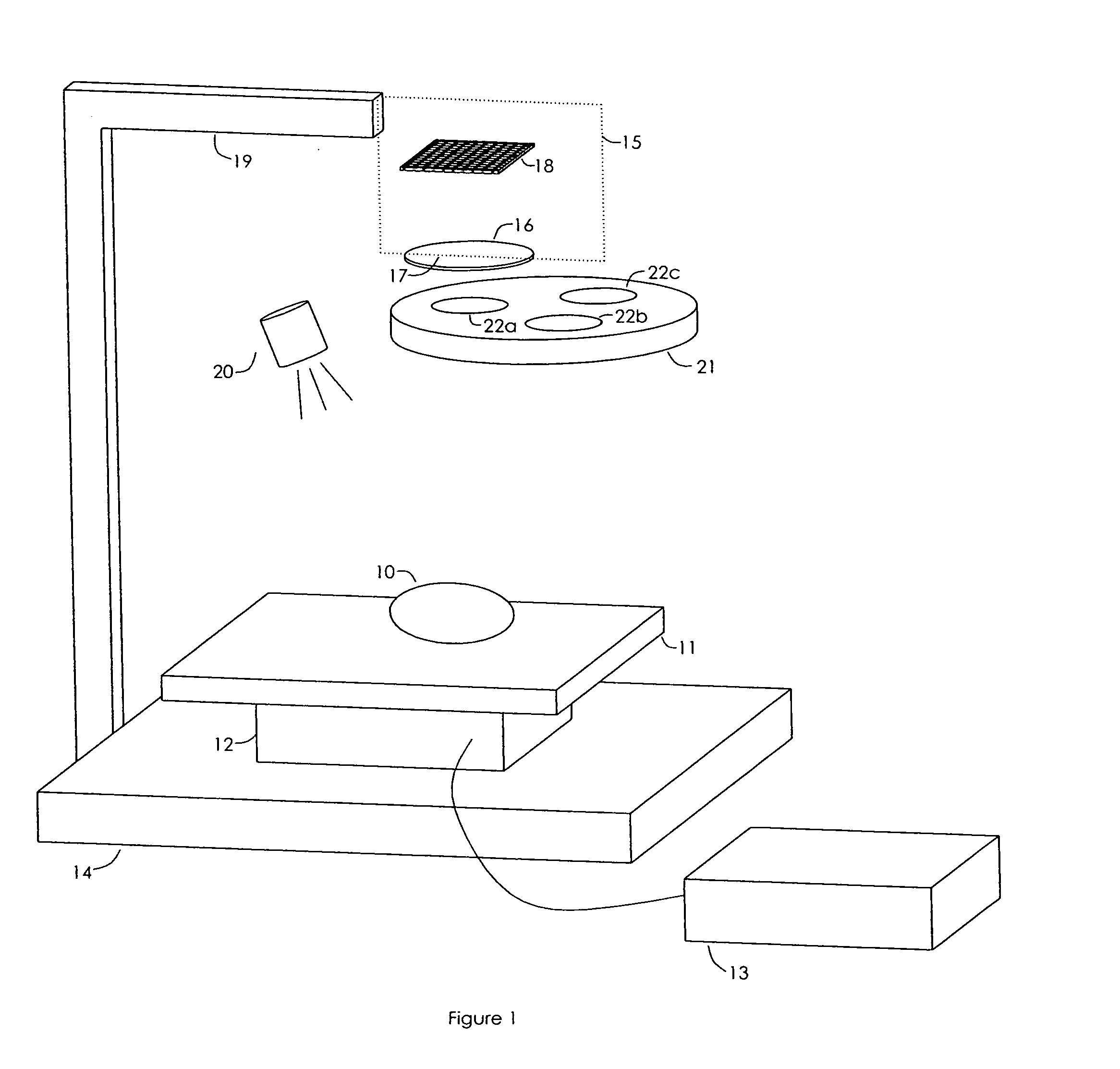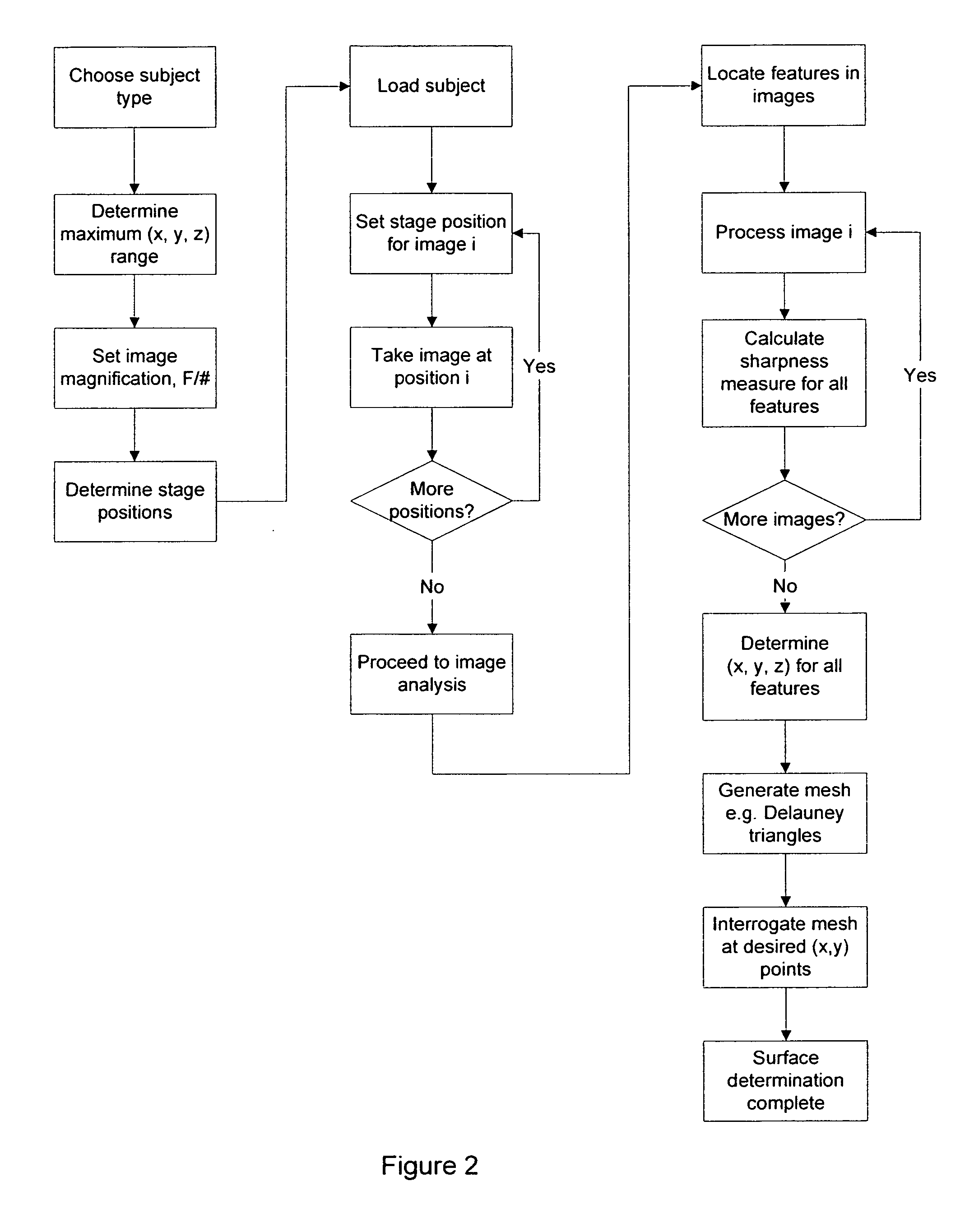Surface measurement apparatus and method using depth of field
- Summary
- Abstract
- Description
- Claims
- Application Information
AI Technical Summary
Benefits of technology
Problems solved by technology
Method used
Image
Examples
Embodiment Construction
[0019]In this discussion, technical terms have their normal meanings unless stated otherwise. “Subject” refers to an intact animal subject, including without limitation a mouse, rat, human, cat, dog, monkey, zebrafish, or any other creature for which it is desired to learn its surface contours. “Object” refers to a physical object, such as a subject, whereas “image” refers to an image formed by optics of some kind.
[0020]“Lens” means a lens or lens assembly, unless a more specific term is used. “Light” means light of any type whatsoever, including ultraviolet, visible, and infrared light. “Stage” means an apparatus for holding or supporting a subject. “Height” means a specified distance above the stage. Unless stated otherwise, the coordinate system is defined where the Z axis is perpendicular to the stage surface, and the stage surface defines an X-Y coordinate plane.
[0021]The invention is best explained by relating specific embodiments. It will be understood, however, that this is ...
PUM
 Login to View More
Login to View More Abstract
Description
Claims
Application Information
 Login to View More
Login to View More - R&D
- Intellectual Property
- Life Sciences
- Materials
- Tech Scout
- Unparalleled Data Quality
- Higher Quality Content
- 60% Fewer Hallucinations
Browse by: Latest US Patents, China's latest patents, Technical Efficacy Thesaurus, Application Domain, Technology Topic, Popular Technical Reports.
© 2025 PatSnap. All rights reserved.Legal|Privacy policy|Modern Slavery Act Transparency Statement|Sitemap|About US| Contact US: help@patsnap.com



